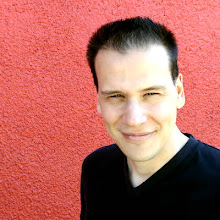Remembering Kanjis
A few years ago, I decided to learn another language. English is not my first language and I remember fondly having to learn it. Learning English had been fun and challenging. It had also given me perspective on languages and thought processes.
For various reasons, my non-obvious choice was: Japanese. Japanese is an interesting language, but one of the most challenging aspect is definitively the writing systems. Japanese consists of 3 writing systems: hiragana (Japanese phonetic characters), katakana (Japanese phonetic characters - used for foreign words) and kanji (Chinese characters). Both hiragana and katakana contain 46 characters (or more, depending on how you count - the point is the order of magnitude) while kanji has ~50000 characters. But, you only need ~3300 to be a literate Japanese adult.
How do you go about learning ~3300 characters? Incidentally, maybe you don't... But you would be missing a whole part of the language. It all depends on your level of involvement.
I have seen too many too many books "throwing" Kanjis at me without a specific goal. Flashing thousands of Kanjis in front of me will not help me learn them. It's all about memory and learning techniques. The correct associations must be created in your head to retain the data. Some of the concepts I strongly believe in are explored here
Yesterday, I picked up A Guide to Remembering Japanese Characters. Worth mentioning:
Another recent example for me was Head First Design Patterns -- a really good book on patterns. The introduction also explains a bit about why the book presents material the way it does: an interesting mix of "cognitive science, neurobiology, and educational psychology". I think there is much of to be learned about "how" to teach rather than "what" to teach.
For various reasons, my non-obvious choice was: Japanese. Japanese is an interesting language, but one of the most challenging aspect is definitively the writing systems. Japanese consists of 3 writing systems: hiragana (Japanese phonetic characters), katakana (Japanese phonetic characters - used for foreign words) and kanji (Chinese characters). Both hiragana and katakana contain 46 characters (or more, depending on how you count - the point is the order of magnitude) while kanji has ~50000 characters. But, you only need ~3300 to be a literate Japanese adult.
How do you go about learning ~3300 characters? Incidentally, maybe you don't... But you would be missing a whole part of the language. It all depends on your level of involvement.
I have seen too many too many books "throwing" Kanjis at me without a specific goal. Flashing thousands of Kanjis in front of me will not help me learn them. It's all about memory and learning techniques. The correct associations must be created in your head to retain the data. Some of the concepts I strongly believe in are explored here
Yesterday, I picked up A Guide to Remembering Japanese Characters. Worth mentioning:
- Detailed explanation of origins and meanings (interesting)
- Suggestion for memorizing (mnemonic)
- Components making up character (divide and conquer)
- school level of the character (track your progress)
Another recent example for me was Head First Design Patterns -- a really good book on patterns. The introduction also explains a bit about why the book presents material the way it does: an interesting mix of "cognitive science, neurobiology, and educational psychology". I think there is much of to be learned about "how" to teach rather than "what" to teach.


0 Comments:
Post a Comment
<< Home